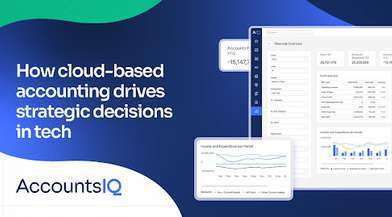
In our article for the Institute of Chartered Accountants England and Wales (ICAEW), AccountsIQ’s CEO and founder, Tony Connolly, FCA discusses the challenges international businesses face and highlights how today’s accounting systems can address these.
As Brexit looms, UK businesses might need to consider establishing subsidiaries in EU countries as an alternative to cross-border trading. Having a local entity helps when it comes to tax, reporting and compliance issues, but it can introduce a new level of complexity to your accounting.

Tony Connolly FCA, Founder & CEO, AccountsIQ]
Cross-border trading can be complex. Often, as cross-border trading increases, businesses set up entities overseas to localise compliance and show customers their commitment to that market. Even if your business hasn’t previously done this, with the likely onset of Brexit later this year, it could be easier to trade in the EU via a legal entity in a member country. While operating through a local entity can make trading easier, establishing multiple entities involves more complex accounting processes, including handling multiple currencies (FX), dealing with inter-company transactions and having to consolidate and report results in multiple currencies.
Managing multiple currencies can be trickier than you think
If you already handle multiple currency transactions, you’ll appreciate the complexities of processing realised and unrealised gains and losses on FX transactions and outstanding FX balances. Consolidating FX subsidiaries brings a new level of complexity around reporting results in base currency, involving FX Revaluation Reserves to recognise gain or loss in net asset value resulting from holding those net assets in foreign currency. Spreadsheets are great for projections and reporting, but converting different elements at different rates and posting the monthly difference to Revaluation Reserves can be tricky. To calculate this you need to:
- Value Profit & Loss accounts at period average rate (ie: as revenues and costs build)
- Value Assets & Liabilities at period end rate (ie: as if you had to realise them at that point)
- Value Equity investments at the rate when the investment was made.
Doing this once a year for audit purposes is reasonably straightforward but, if you are reporting monthly results, managing constant FX fluctuations outside the system can prove difficult as losses in one month can be compensated by gains in subsequent months and vice versa.
Inter-Company Transactions and Balances
With multiple entities you will undoubtedly end up with inter-company transactions from intercompany trading, recharges of centrally paid costs or charging management fees for shared services. With entities in different base currencies, there are FX risks in any outstanding balances that need to be accounted for and you need to decide whether the parent or subsidiary takes the risk – i.e. if the currency fluctuates, which is at risk?
Managing Inter-Company transactions using GL journals makes calculating unrealised gains and losses on month end outstanding balances difficult. This is best done via Inter-company AP and AR accounts. Usually the charging entity initiates transactions and the entity being charged takes the FX risk, so the balances need to be managed in the charging entity currency. Unrealised gains/losses need to be recognised in the subsidiary before consolidation so that Inter-company balances eliminate on consolidation into group base currency.
What FX Functionality should your Finance System have?
If you do not already have FX subsidiaries your Finance System might handle multiple entities and FX consolidations. Here are some questions you might ask:
- Are realised gains and losses automatically posted when FX receipts or payments are allocated against the invoices they are paying?
- Are unrealised gains and losses calculated at month end for Accounts Payable, Accounts Receivable and Bank Balances held in foreign currency?
- Does the system handle automated intercompany transactions and balances so the FX risk (unrealised and realised) is calculated and posted in the entity taking the FX risk?
- Can inter-company balances be easily reconciled and are they eliminated on consolidation?
- Does the system do consolidations and calculate FX Revaluation Reserves automatically, reflecting accumulated FX Revaluation Reserves in the Balance Sheet and current period movement in the consolidated Profit & Loss account?
- Does the system allow mapping to an alternative Chart of Accounts (COA) to handle jurisdictions that require reporting based on a prescribed COA (e.g. France, Italy), while allowing you to report group financial results based on Group COA.
- Are local budgets consolidated and converted to group base currency?
Conclusion
There are significant benefits of setting up locally based subsidiaries in foreign jurisdictions rather than simply selling cross border. However, this does introduce some additional accounting requirements and addressing these using spreadsheets can be problematic. You therefore should consider if your Finance System can handle this environment easily. If considering new software, Cloud systems providing anytime anywhere access, without requiring installed software in each location, should be considered.
Learn More
Discover how we have enabled AES International to make major efficiencies in their accounting practices. AES selected AccountsIQ as it could easily consolidate their multiple entities, multiple bank accounts and myriad of currency transactions, and because it is easy to produce bespoke management reporting packs. Read the AES Case Study.
Find out how we can help you with your multi currency consolidation and international accounting needs. Contact us or request a quote for our award-winning Cloud accounting software.



